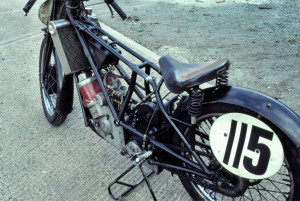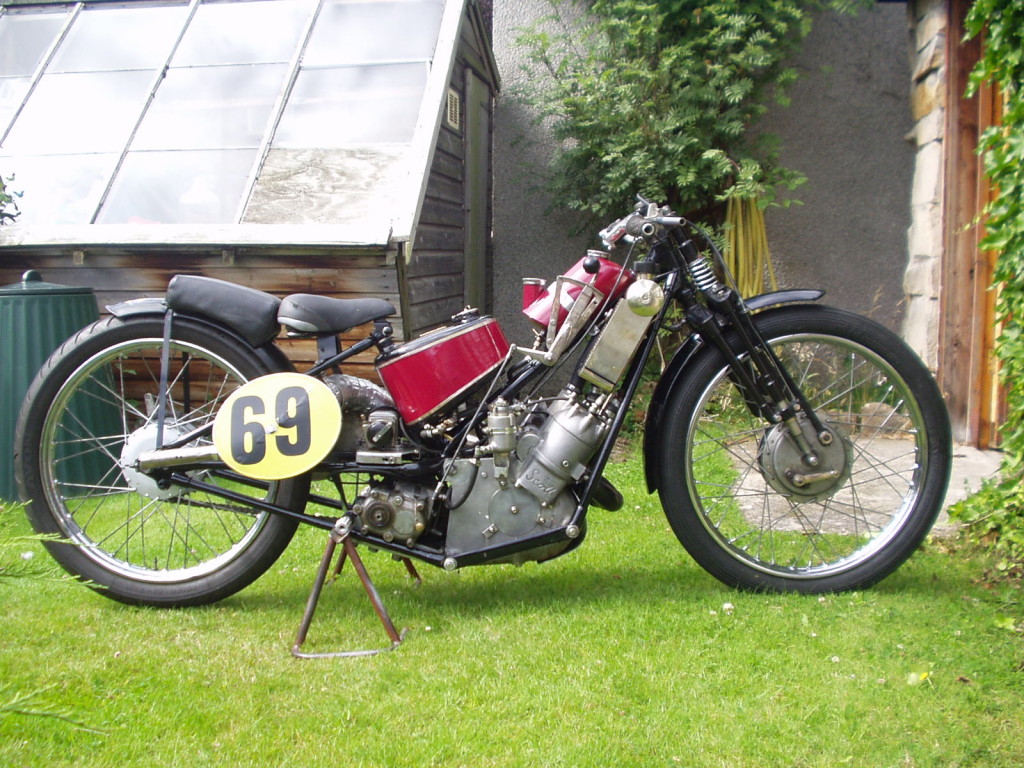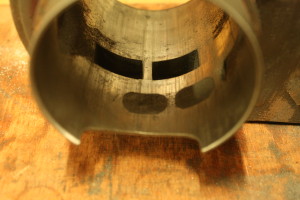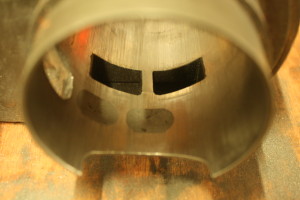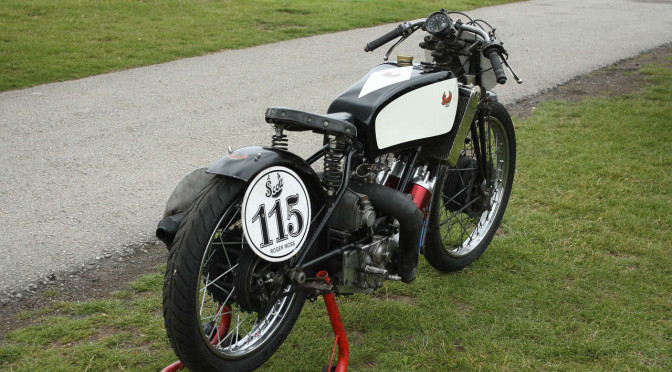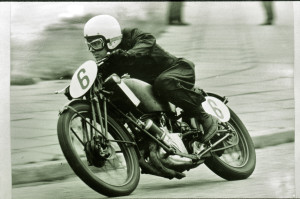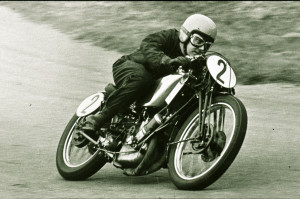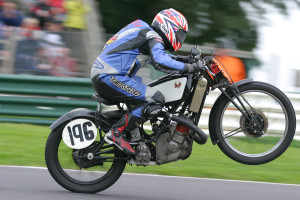After what must have been the longest Devon to Leicestershire trip I can remember doing, I arrived on Friday night with a view to getting the bottom end of the Scott Super Squirrel racer rebuilt by Sunday afternoon.
I knew that I was going to change the main bearings, as the ones I had were a bit notchy in the case. I also wanted to do some more gas flowing on the crankcase to allow me to use another inlet port that was blanked off by part of the crankcase as my calculations had shown that I was deficient in the inlet gas flow. I also wanted to check the static flywheel balance and the crank assembly end float and alignment.
The first thing I did was my porting as I knew I’d have to clean up the cases before replacing the main bearings. 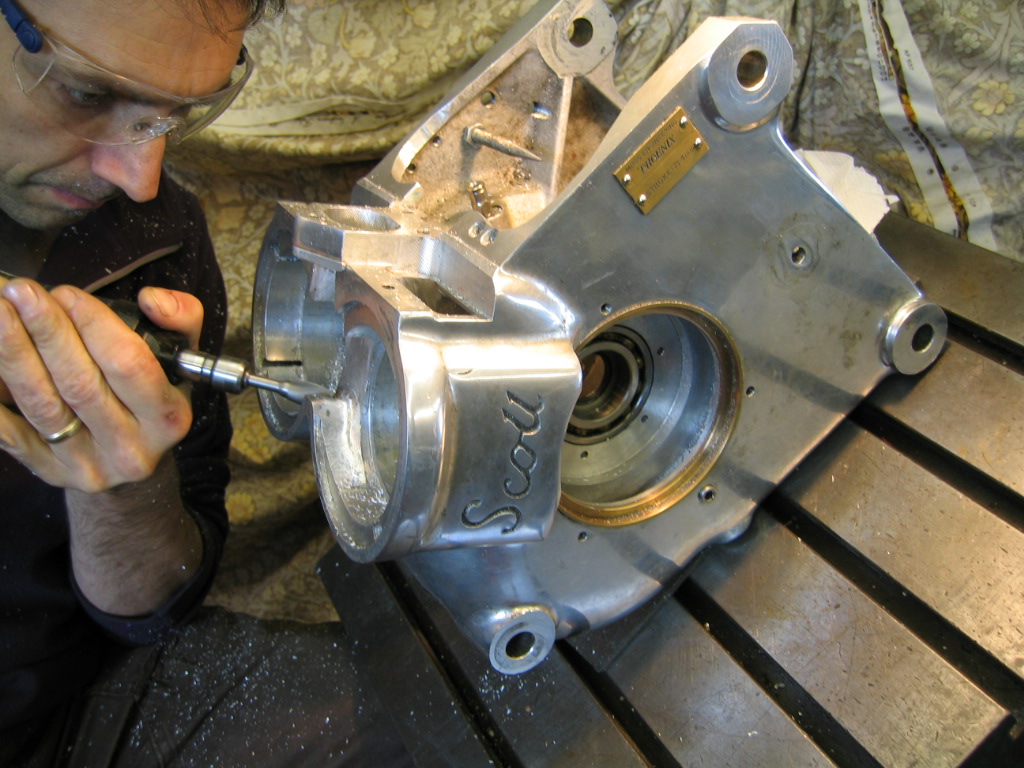
Apart from a little de-burring here it is finished:
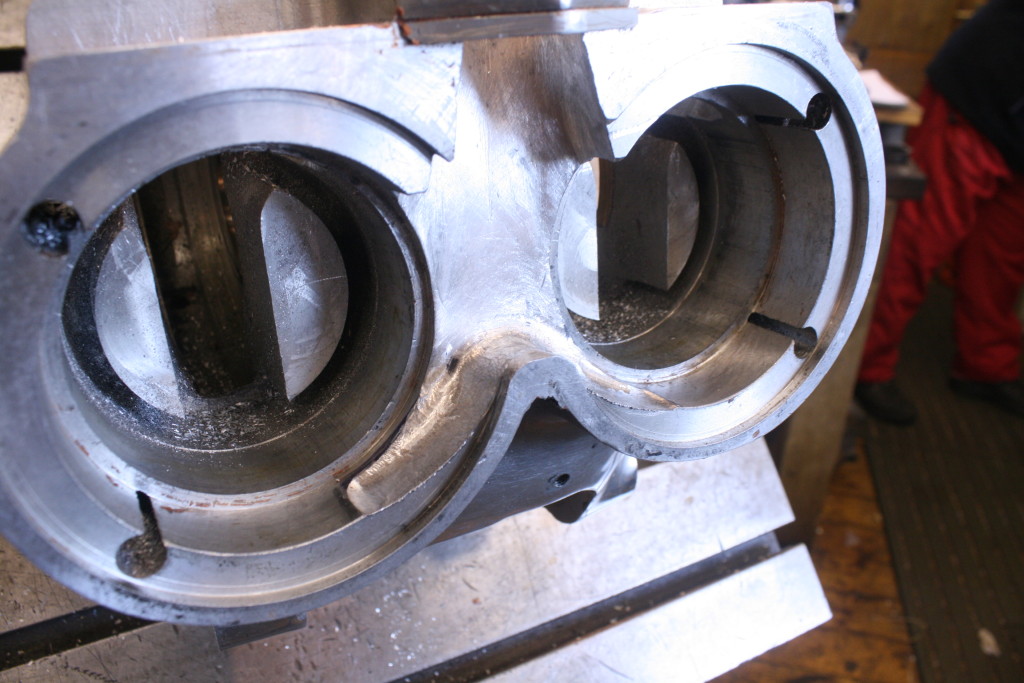
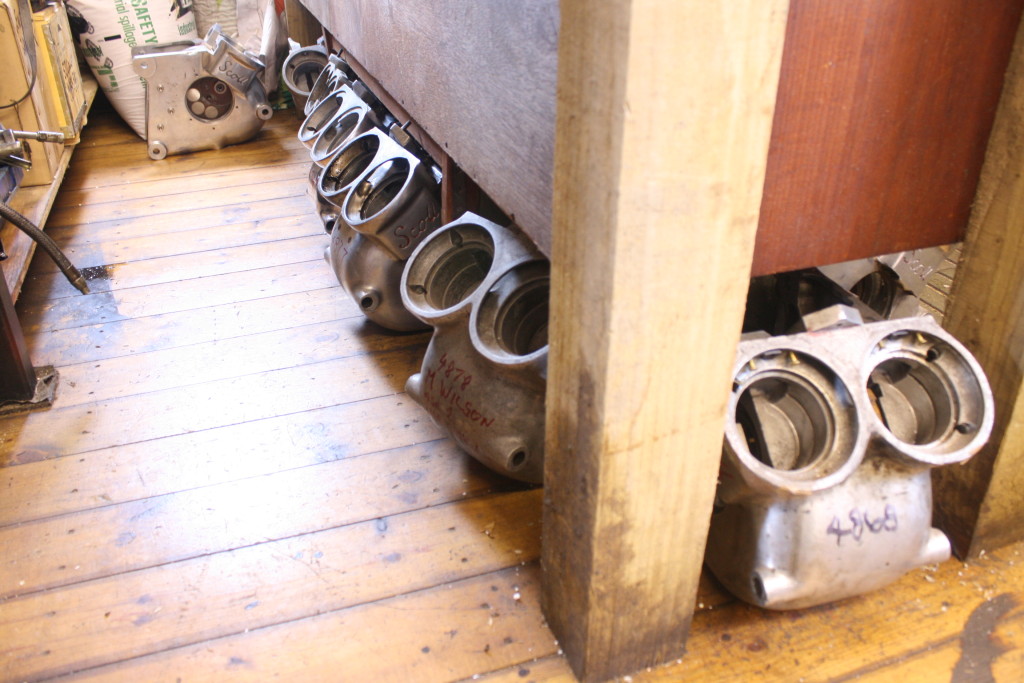
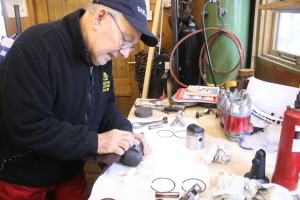
One of the first things we noticed when we looked carefully at the crankshaft assembly was there looked like there had been some movement on a crank taper. Wanting to err on the side of caution we set up a lap on his Thiel 158 jig borer to just make sure that the tapers were good and clean in the flywheel. A bit of gentle lapping and all was fine.
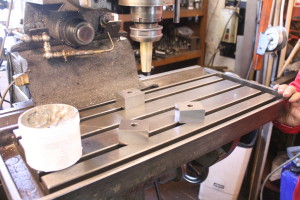
Next, we checked the static flywheel balance before ‘knocking up’ the crankshaft/flywheel assembly for checking the distance between inner control faces on cranks. This, we compare to the bearing face to bearing face measurement of the crankcase to determine the end float as you cannot feel and measure it by simply moving the crank side to side when installed as I used ball races and not rollers as standard.
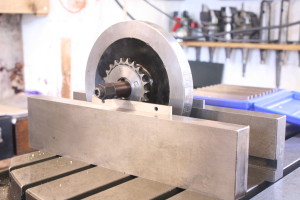

See here Roger’s magnificent Thiel 162 horizontal jig mill. We dug out the floor with a mini digger and filled it with at least 1 meter deep of concrete to create a sturdy foundation for this. Table rotates 360° and flips up to 90°, whilst the whole machining column can move in and out. The spindle then can be moved forward/back and up/down.
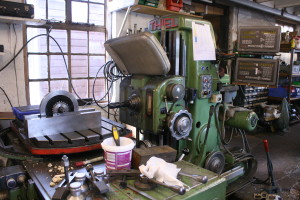

The Smart and Brown 1024 VSL lathe is a good place to put up the crank and flywheel assembly between centres (he sells these if anyone’s interested) 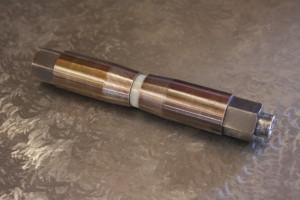 We measure skip and run-out just to make sure there are no problems.
We measure skip and run-out just to make sure there are no problems.
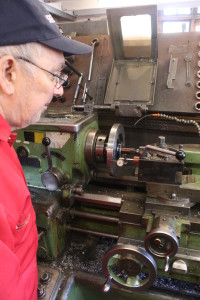
I made a new key, using slip gauges to determine the width. You have to be careful to check the height of the key as well as the length in case these prevent the flywheel tapers from safely locating in the flywheel.
Flywheel/ crank timing key. This is to time only and is not for driving purposes.
After all this, and before the assembly, the old bearing were removed and the cases heated to accept the new ones. The 22 tooth drive sprocket was deemed to be too worn and a replacement was bored out to suit the spigot and fitted.
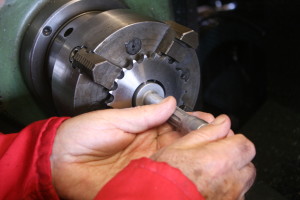
After that the new oil seals were fitted to the housing behind the main bearings and then the cranks finally installed and ‘knocked up’. The key doesn’t transmit load, it absolutely is not meant to… the taper has to do that. The crank tapers are driven in by tightening the centre bolt and then (with adequate provision to provide a dead stop on the other side) the centre of each crank is struck using an aluminium mallet, or large diameter drift alternately whilst continuing to tighten the centre bolt. There will come a point where the bolt cannot any longer be easily tightened and this is then considered done.
All in a very successful couple of days and a bottom end that should hopefully last for a while!




